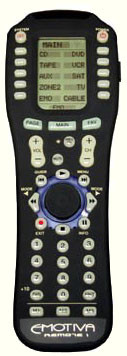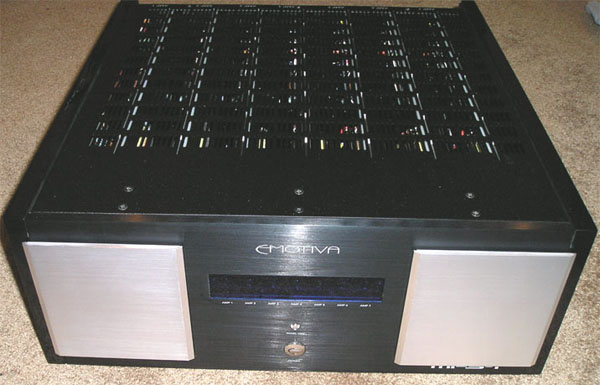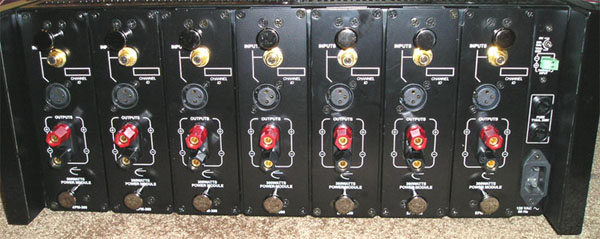|
||||||
|
DMC-1 Remote Control The MPS-1 is a heavyweight multi-channel amplifier. And I mean that literally! By having to install each amplifier module myself, I felt that I know this amplifier inside out. Mark knows the high quality of the parts in the modules, so he is not shy about having customers get up close and personal with them.
Easily noticeable features on each
amplifier module (called the EPM-300) are a big toroidal transformer, metal
fins, and a small fan for cooling. Installation of the amplifier modules was
quite easy. You just need to unscrew the back plate cover, slide each
amplifier unit into the guiding rails on top and bottom panels, and tighten
it with the screws. If you buy this amplifier, I suggest you assemble it
close to the place you plan to put it on or better yet if you can put the
case in the desired location and then do the unit insertion afterwards. This
is to save your back, because as I mentioned previously, once it is
assembled, this is a truly heavy amplifier to lift, weighing over 115
pounds.
The faceplate of the MPS-1 matches the appearance of the DMC-1 with a combination of black and silver finished panels. It also has seven LEDs that also function as the status indicator of each amplifier module. The LED will be blue when the power module is installed and ready, green when the module is installed and in standby mode, and red when the module is faulty. Besides the power on/off button, the front panel also features a small button to dim (three levels of brightness) or turn off the front panel LEDs. The MPS-1 can be left on all the time or can be triggered using DC voltage or audio signals. Hence, it is flexible enough to accommodate various application conditions.
The finish quality of both DMC-1 and MPS-1 is nothing short of excellent. Besides the silver aluminum panels on the front plate, both units have glossy black wood side panels. All these contribute to the elegant look of the units, which is pleasing to the eyes and surely will bring out big pride of ownership.
|
||||||






